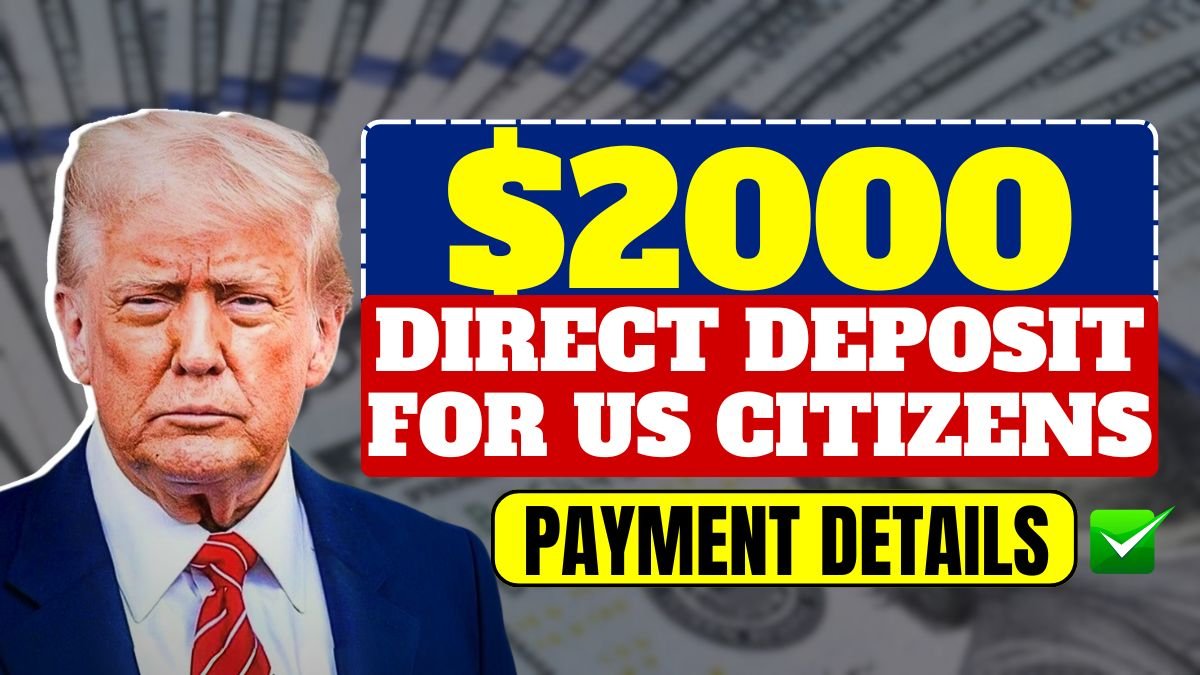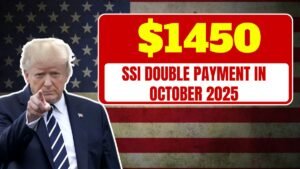$2,000 Direct Deposit for US Citizens in October 2025 – Recently, there has been some good news for millions of people facing financial difficulties in America. The Internal Revenue Service (IRS) has officially approved $2,000 direct deposit payments. This new initiative is specifically designed for families, retirees, and individuals facing financial stress who need financial support until 2025. Amid rising inflation, food and fuel prices, and housing inflation, this payment could be a ray of hope for many. The IRS has already begun verifying eligibility criteria and payment schedules so that the money goes directly to those who need it most.
The Importance of $2,000 Direct Deposits
Many American families have faced severe economic hardship over the past few years. Job loss, rising inflation, and a sudden increase in the cost of living during the pandemic have severely impacted families’ finances. At this time, the $2,000 direct deposit is not only a financial relief but also an effort to revive the economy. This payment is specifically designed to help those most affected by inflation—such as low-income individuals, senior citizens dependent on Social Security, and taxpayers with dependents.
This payment is not meant to give relief to the economically vulnerable as was done to other previous financial assistance programs. The effect of it will not only be relieving people but it will also trigger consumer spending by injecting more money into the wider economy.

$1,702 Stimulus Payment for Seniors – October 2025 Full Payment Schedule, Eligibility, and Tax Rules
Eligibility for the $2,000 Payment
To make this relief fair and equitable, the IRS has explicitly put a number of eligibility stipulations. Some of the major eligibility criteria are listed below:
Income Requirements:
- Single filers with annual incomes less than $75,000.
- Heads of Households with annual incomes less than $112,500.
- Married couples filing jointly earning less than $150,000.
Those earning above these income limits may receive limited or reduced payments, depending on their adjusted gross income (AGI).
- Tax Filing:
- You have to submit a 2023 or 2024 federal income tax filing. This makes sure that the IRS receives up to date information and thus the processing of direct deposits would be easy.
- Social Security and Veterans Benefit Recipients:
- Social Security (SSI, SSDI) recipients receive benefits as well, but in this case, the recipients do not file their tax returns, and their income must fall within the eligibility parameters.
- Citizenship Status:
- Only U.S. citizens and permanent residents with a valid Social Security number are eligible for this payment.
When will payments be received?
The IRS hasn’t yet provided an exact date, but it expects payments to begin by the end of October 2025. The payment process will generally work as follows:
- Direct Deposit:
- People whose banking information is already with the IRS will receive payments directly into their bank accounts first. This is the fastest and most secure method.
- Paper Checks and Prepaid Debit Cards:
- For those who don’t have access to the Direct Deposit system, payments will be mailed via check or prepaid debit card, which may take approximately 3 weeks to arrive.
If you received previous financial relief or a tax refund via direct deposit, you don’t need to do anything. The IRS will use the same details as its records.
Steps for Non-Filers
If you haven’t yet filed your 2023 tax return, you should file it as soon as possible. The IRS uses tax records to verify income and dependents, which determines the amount of your payment.
Receiving Social Security or VA benefits does not require filing a tax return. The IRS will use those agencies’ records directly.
How to Check Payment Status?
Once this feature is activated, the IRS plans to reactivate the “Get My Payment” online tool. Through this tool, taxpayers can access the following information:
- Payment Processing Status
- Payment Method (Direct Deposit or Mail)
- Estimated Date of Received
This feature will ensure that people receive complete information about their official payment in a timely manner.
Why is this payment a game-changer?
To most American families, this 2000 dollars does not represent a money deposit, but a saving grace. Direct deposit is one of the possible solutions to help families afford basic expenses, reduce debts, and cover bills due to increased rent, grocery, and healthcare prices.
Analysts are of the opinion that such a payment will not just help individuals financially, but will also affect the entire economy positively. It will push the economy into greater heights and enable families to make the most of the season because of improved consumer spending.
Conclusion:
The direct deposit payment amounting to 2,000 dollars is a very important step during the times of need. It does not only give financial relief, it also enhances self-reliance and economic security of the American families. This payment has seemed to be an answer to those experiencing the pressure of the pandemic, the inflationary effects, and the increasing cost of living. This plan can actually change the lives of millions of people because the IRS has done a lot of preparations so that it can be correctly eligible and distributed in time.
FAQs:
Q. Who is eligible for the $2,000 payment?
A. Single filers earning under $75,000, heads of household under $112,500, and married couples filing jointly under $150,000. Social Security and VA benefit recipients may also qualify even if they didn’t file taxes.
Q. Do I need to file taxes to get this payment?
A. Yes, if you haven’t filed your 2023 or 2024 federal tax return. Social Security and VA recipients don’t need to file; IRS will use existing records.
Q. When will the payment be sent?
A. Payments are expected to start by the end of October 2025. Direct deposits will be sent first, followed by mailed checks or prepaid debit cards.


